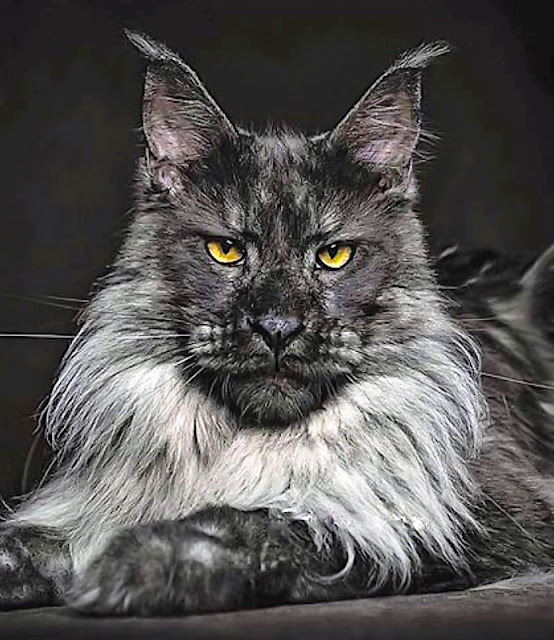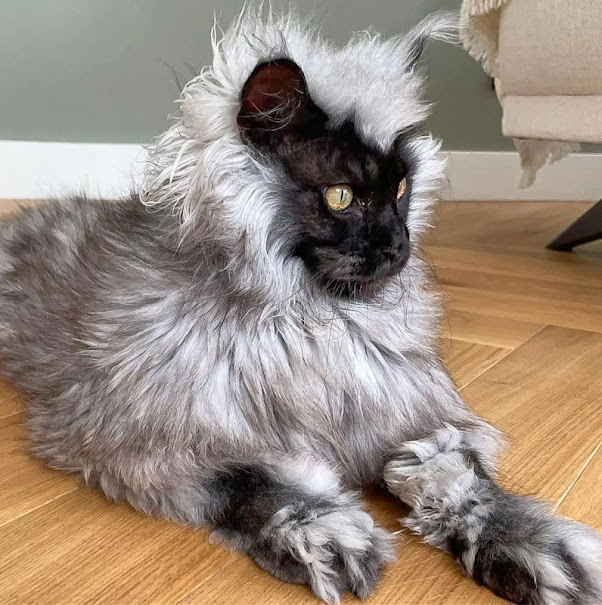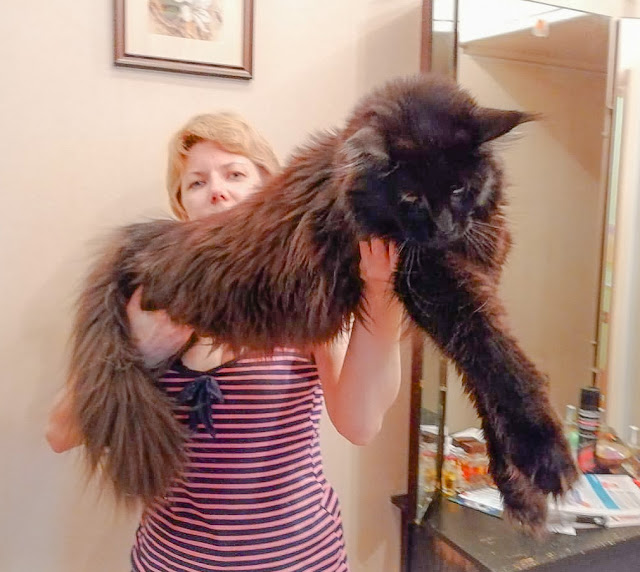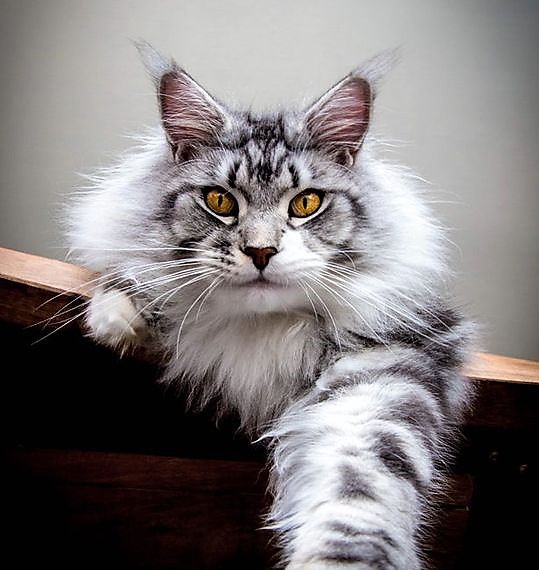Maine Coon Adaptation to Winter
 |
| Floris -- photo ©dirk huijssoon |
The theory goes that Maine Coons have several adaptations to deal successfully with harsh winter climates. This, it is argued, harks back to the early days when they evolved as semi-feral cats from long haired cats imported into the United States either by the Vikings in the 11th century or seafarers and settlers to America in the early 17th century - Maine Coon history.
The Maine Coon has a dense water resistant type coat. Particularly, it is longer on the undersides and the rear of the cat. The theory is that this protects the cat when sitting and walking in snow, icy or wet conditions.
In addition it is said that the long plumed tail can be used as a protector to provide warmth when curled up resting.
The Maine Coon not uncommonly has large polydactyl paws acting like snow shoes. However this theory is probably bogus because the ships cats that were imported into the USA were often polydactyl cats because sailors preferred them believing that they were better rat catchers and better on deck!
The Maine Coon is also known for tufts of fur between the toes to keep the paws warmer when walking on cold surfaces. The fur also adds size to the paw without adding weight.
Finally, this cat breed should have ear furnishings under the breed standard. This is ear hair including a striking tuft on the top of each ear. This ear hair keeps the ears warmer.
We should realise though that the Maine Coon that we see in photographs are purebred cats, selectively breed for these features. There was no evolution going on, just deliberate breeding for appearance. The original Maine Coon, the cat that existed before the cat fancy decided to breed the cat, must have been more typical as a long haired cat. We don't know how strong these features where at that time.
I suspect that the concept that the Maine Coon is adapted for cold weather is no different to any other long haired or semi-long haired cat.










Comments
Post a Comment
Please share your Maine Coon experiences.